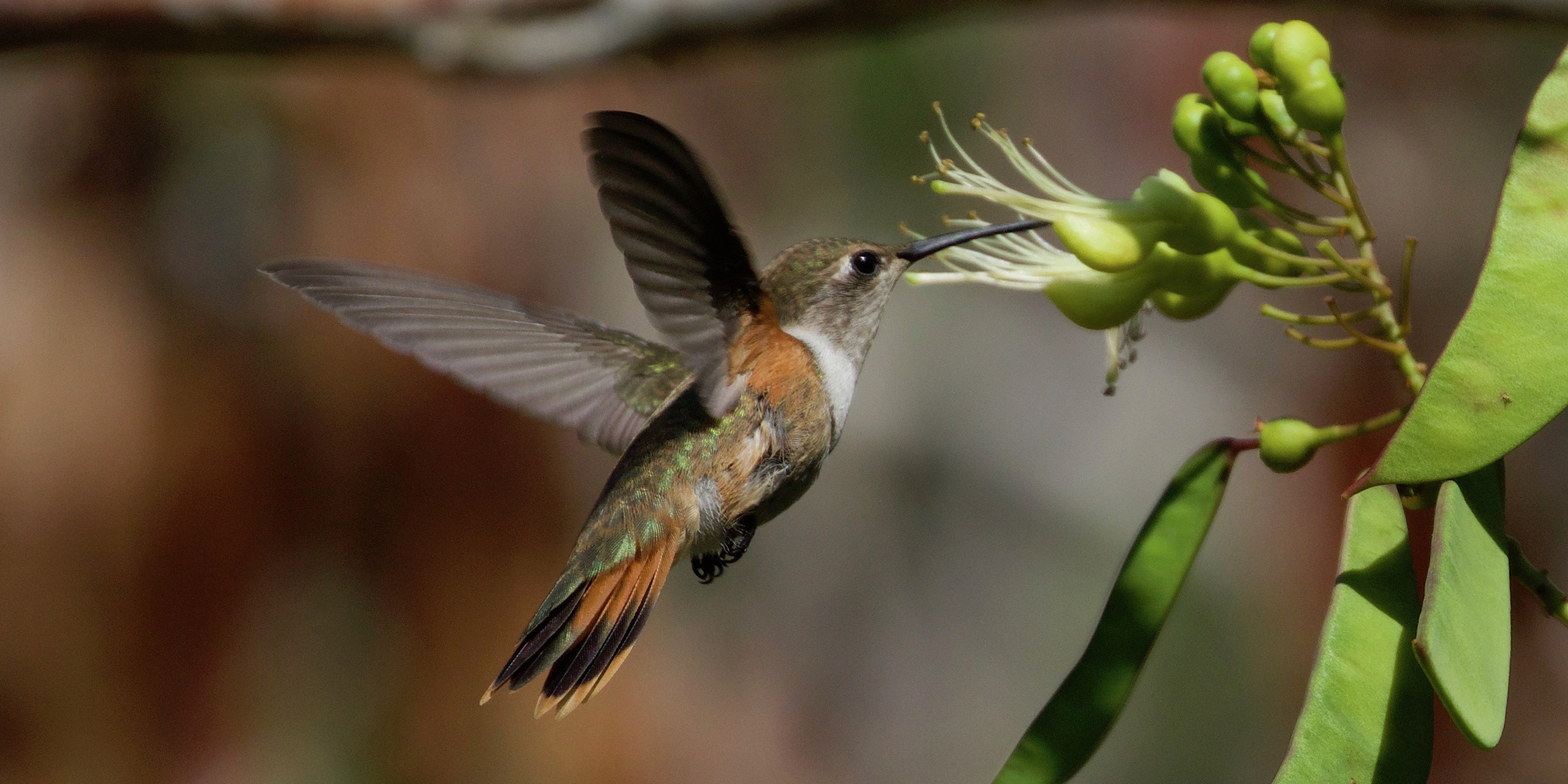Originally published 25 February 2003
EXUMA, Bahamas — For several weeks now I have been living with a pair of hummingbirds—Bahama woodstars, tiny creatures, about the size of my little finger.
They live somewhere nearby, though I haven’t found their nest. They spend all day at our hummingbird feeder, sipping sugar water. They have become quite tame. I expect that soon I will have them feeding from a cup in my hand.
What perfect little machines they are! No other bird can perform their tricks of flight — flying backwards, hovering in place. It is hilarious to watch the bigger and less-well-adapted bananaquits trying to drink from the perchless hummingbird feeder, clumsily flapping their bulky wings to stay in place.
The hummingbird pays a price for its agility. It takes energy to move its wings so fast — an invisible 80 beats per second. The bird must consume its weight each day in nectar (or sugar water). That’s the equivalent of me guzzling a bottle of Gatorade every five minutes of my waking hours.
Zip. Zip. From place to place. As I watch, I never cease to wonder at the chemical system of command and control that lets the bird perform a dozen intricate maneuvers more quickly than I can turn my head.
The hummingbird is awash in signals from its environment — visual, olfactory, auditory, and tactile cues that it must process and respond to with lightning speed.
How does it do it? Proteins, mostly.
A protein is a chain of hundreds of amino acids folded into a complex shape like a piece of a three-dimensional jigsaw puzzle. Every cell of the hummingbird’s body is a buzzing conversation of proteins, speaking a language of shape — shapes as various as the words in a human vocabulary.
An odor molecule, from a blossom, for example, binds to a receptor protein on the surface of a cell of the hummingbird’s olfactory organ — like a jigsaw-puzzle piece with its neighbor. This causes the receptor to change that part of its shape that extends through the cell membrane.
Another protein inside the cell now binds with the new configuration of the receptor, and changes its own shape. And so on, in a sequence of shape-shifting and binding — called a signal-induction cascade — until the brain of the hummingbird experiences the odor.
Appropriate signals must now be sent from the brain to the body. Wing muscles must respond — tip, aim, zip — to direct the hummingbird to the source of nourishment. Tens of thousands of proteins in a host of cells talking to each other, each protein genetically prefigured to carry on its conversation in a particular location in the body.
All of this happens continuously, and so quickly that to my eye the bird’s maneuvers are a blur.
The 20th century was the century of the genetics. We now understand how genes make proteins — tens of thousands of different kinds of proteins in an organism such as a human or a hummingbird.
The 21st century will be the century of proteomics, the science of proteins. A hugely complex language of shapes and shapeshifting must be translated, dictionaries compiled, grammar and syntax understood. The task is monumental, and could not be undertaken without the benefit of massive computer databases and international collaborations of hundreds of scientists.
Even as you sit there reading these words, the conversation is going on in every cell of your body. Even as my hummingbird pauses at the feeder, its cells are talking to each other at a speed that makes ordinary human language seem positively tongue-tied.
The biologist Ursula Goodenough called her little book of scientific and spiritual reflections The Sacred Depths of Nature. The depths she is thinking of have a lot to do with the astonishing molecular chemistry that lets an organism like a hummingbird burn like a flickering flame, to dart, to hover, to disappear from one place and appear in another as if by magic.
“The power of the visible is the invisible,” said poet Marianne Moore. The sleek, iridescent body, the soda-straw beak, the whirring helicopter wings: What we see is dazzling enough. What we cannot see is even more dazzling.



